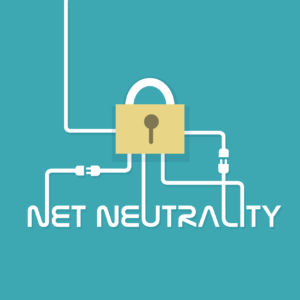The Federal Communications Commission (FCC) has issued a new proposed rule that would impose far-reaching regulations on large internet service providers like AT&T, Comcast, and Verizon. These “net neutrality” rules would reclassify broadband internet access as a telecommunications service subject to common-carrier regulations under Title II of the Communications Act.
We have seen this movie before. In 2015, the Obama-era FCC issued the Open Internet Order (OIO), which likewise reclassified broadband internet access under Title II. That reclassification was repealed in 2018 by the Trump-era FCC’s Restoring Internet Freedom Order.
The genesis of the announcement was an executive order President Joe Biden issued two years ago that encouraged the FCC to “restore net neutrality rules undone by the prior administration.” That has now been made possible by the confirmation of Anna Gomez—former counselor to Obama-era FCC Chairman Tom Wheeler—as an FCC commissioner, giving the commission a 3-2 Democratic majority.
The FCC will now vote Oct. 19 on whether to advance the draft rules. If approved, the FCC draft would be open for public comment until approximately mid-December, followed by an opportunity for public replies through January. A final set of rules could be voted on before next summer.
Between the new majority and Biden’s executive order, the notice-and-comment period will be largely perfunctory, as it is a virtual certainty that the commission will bring back Title II regulation. But nothing much has changed since the last net neutrality push. The case for net neutrality was always weak, but it has only gotten weaker.
Internet service providers (ISPs) have always invested heavily in broadband deployment and speeds, with little evidence of blocking, throttling, or other nefarious conduct to block access to content. If anything, investment by broadband providers to expand their networks and speeds has increased since the onerous Title II regulations were repealed, after a dip in investment in the leadup to and application of the rules.
Overwrought complaints that the repeal of net neutrality would slow the internet to a standstill look laughable in hindsight, as the growth of internet services since the repeal—particularly during the COVID-19 pandemic—aptly demonstrates. According to SpeedTest, median fixed-broadband speeds have quadrupled since net neutrality was first imposed, and more than doubled since it was repealed. The FCC reports more than 90 percent of U.S. households now have access to speeds of 100 Mbps or greater, while nearly 90 percent have access to 1 gigabit speeds or higher.
In other words, there was no slowdown in investment, deployment, or speed, or measurable loss in latency or usefulness, even while so many more people increased their broadband use for work, school, entertainment, shopping, and other uses.
What has changed is that there is a national bipartisan push, led by the Biden administration, to quickly deploy broadband through the $42.5 billion Broadband, Equity, Access and Deployment (BEAD) program. However, states, localities, and private providers have complained that BEAD’s rules are overly complex and burdensome. Title II will add yet another layer of complexity and burdens that may substantially hinder effective broadband deployment to unserved and underserved areas.
Another significant change is last year’s U.S. Supreme Court decision in West Virginia v. EPA, which ruled Congress did not grant the Environmental Protection Agency authority to regulate emissions from existing power plants based on generation-shifting mechanisms from coal to cleaner fuels.
The FCC will face a similar challenge as the EPA. That is because the FCC lacks the clear authorization to impose net neutrality that the Supreme Court requires. Neither the Communications Act nor the 1996 Telecommunications Act explicitly authorizes the FCC to impose common-carrier obligations on ISPs. Indeed, both laws were enacted when the internet either didn’t exist or existed in a form that was entirely different from today.
As with the last experiment with net neutrality, this latest do-over is a solution in search of a problem. The FCC has many pressing issues to deal with right now, including funding its Affordable Connectivity Program, rolling out BEAD, setting rules for digital discrimination, and combatting a court challenge to the Universal Service Fund. Another net-neutrality crusade will generate enormous friction on broadband deployment with almost no noticeable consumer benefits.



